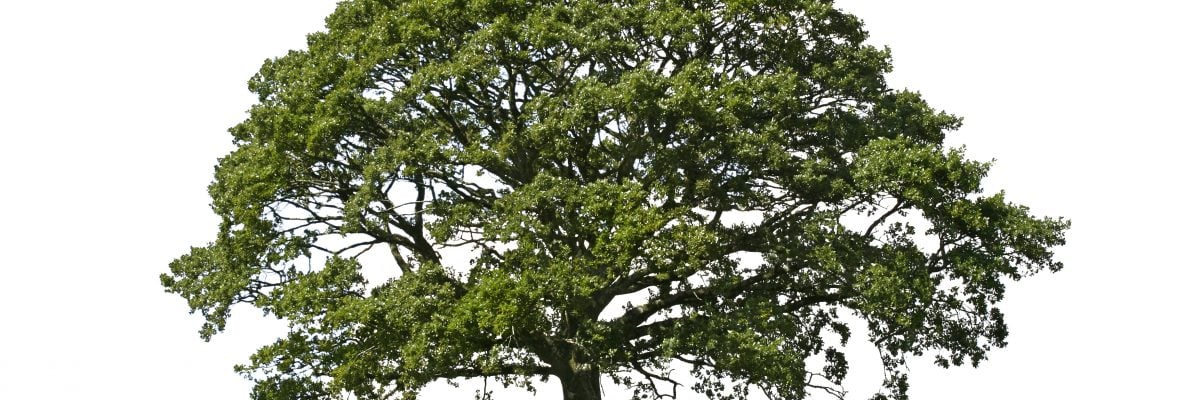
When you look at a tree, what do you see?
For the longest time I just saw branches and leaves. But after studying some philosophy, I now see something far greater: I see God.
Now, you’re probably thinking, Oh no. Karlo has gone off the deep end and become a pantheist! No, no, no. When I say, “I see God,” what I mean is that I see the tree, and every other created thing, as God-bathed. I see something that doesn’t have to exist being held in existence by God.
How did I arrive at such a conclusion? Let’s think it through.
When I look at the tree, I notice it exists. There is something to the tree that distinguishes it from nothing. St. Thomas Aquinas calls it esse, the act of being—that by which a thing exists.
Another thing that I know about the tree is that it doesn’t have its act of being by nature. What the tree is (essence) is not the same as that it is (existence). If it did, there never could be a time when it didn’t exist; just like there can never be a time when a triangle doesn’t have three straight sides, because three straight sides is identical to the essence of a triangle.
But obviously there was a time when the tree didn’t exist (it had to come into being from a seed or sapling), and there will be a time in the future when the tree will no longer exist (eventually it will die of old age, or be cut down, or burned).
If the tree’s act of being doesn’t belong to its nature, then we must ask where it comes from. Perhaps the tree gave itself its own act of being? This is impossible, since it would have to possess the act of existence in order to give it, and not possess the act of existence in order to receive it, in the same respect at the same place and time. Which, of course, is a contradiction.
Perhaps the tree’s act of being simply came from nothing. The philosophical response to this claim is beyond the scope of this article, but suffice to say, “ex nihilo nihil, fit”—from nothing only nothing comes.”[1]
The only other option is that the tree’s act of being comes from a cause outside itself. Such a cause is called an existential cause (a cause that gives existence).
And so we arrive at a very important metaphysical principle: something whose nature (essence) is distinct from its act of being (existence) must receive its act of being from some cause outside itself. And not just the beginning of its existence, but every moment of it. After all, if a thing’s nature can’t explain why it begins to exist, it can’t explain why it continues to exist.
But, what if the cause of the tree’s act of being—call it Cause 1—doesn’t have its existence by nature? Well, then it too would need an existential cause to remain in existence (let’s call that Cause 2).
Notice that in this series the tree’s act of being is dependent not only on the existential causal activity of Cause 1 but also on the existential causal activity of Cause 2, since Cause 1could not cause the tree to exist without the simultaneous existential influence of Cause 2. Cause 1would be an instrument of Cause 2, and without Cause 2, Cause 1would not exist—and consequently the tree would not exist.[2]
Could this type of series of causes of the tree’s act of being regress infinitely? In other words, is it possible for the tree’s act of being to be caused here and now by a series of causes where every cause derives its existence from something else?
This is no more possible than a caboose receiving motion from an infinite number of interlinked train cars without an engine car. In an ordinary series of interlinked train cars, the engine car is the real cause (primary cause) of the caboose’s motion, with the interlinked cars being merely instruments of the engine car. Each instrumental car has motion only inasmuch as the engine car imparts motion to them. Without the engine car, which is a car whose power to impart motion to the other cars is “built-in” and not derived, the instrumental cars would have no power to impart motion to the caboose, no matter how many instrumental cars there are.
Similarly, if there was no first cause outside the series of existential causes with derived existence, a cause that doesn’t derive its existence but has existence “built-in” as it were (where essence and existence are identical), then no instrumental existential cause in the series (Cause1, Cause 2, etc.) would have existence to impart to the tree. A series of instrumental existential causes where there is no first cause for them to be instruments of couldn’t cause the tree to exist any more than the above series of instrumental train cars could cause movement in a caboose if they were not instruments of an engine car.
But the tree does exist.
Therefore, in order to explain why the tree exists here and now, at least one existential cause that is not caused must exist. Unlike the existential caused causes in the series, such a cause does not have to derive its existence from something outside itself because its nature (essence) and act of being (existence) are identical. Its nature is to be. It is what Aquinas called ipsum esse subsistens—subsistent being itself, or what we call God.
It would require some unpacking to see that such a being has all the divine attributes classically ascribed to God. But suffice to say that without such an uncaused cause continuously imparting existence to the series of instrumental causes, the tree, you, and I would lapse into nothingness.
This is what I meant when I said, “When I see the tree, I see God.” Everything whose essence is distinct from its existence, I see it God-bathed: receiving its act of being from God at every moment it exists. Perhaps now you’ll never look at a tree the same!
[1] For an in-depth response, see my article “It’s Not Beginner’s Luck” in Catholic Answers Magazine, March-April 2016.
[2] The question of whether there can be instrumental causes of sheer existence has no bearing on the argument. For an in-depth treatment of this issue, see my article “Between Existence and Annihilation” in Catholic Answers Magazine, July-August 2016).



